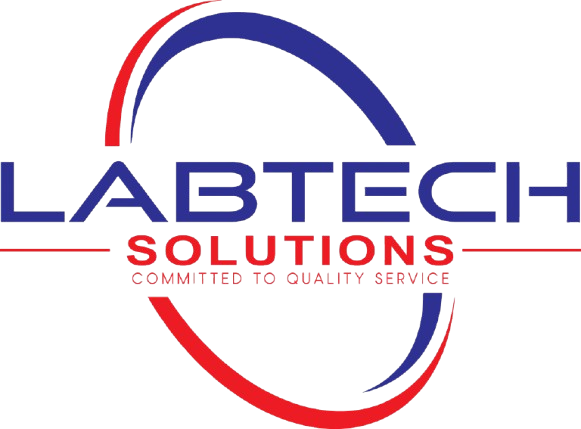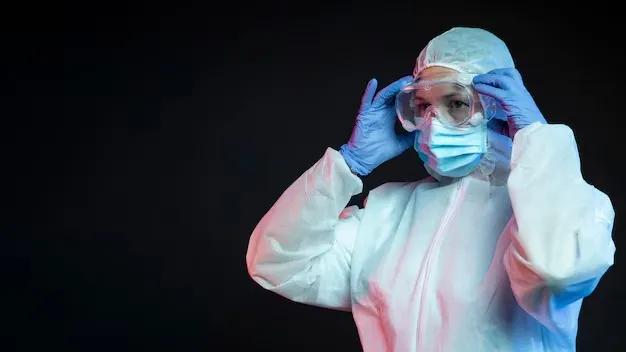Numerous hours spent in the lab are fuelled by the excitement of scientific discovery. Ensuring your safety and the safety of others around you is a fundamental duty that lies beneath the enjoyment. While having a well-equipped lab is important, lab safety must come first.
At Valency Lab we recognise the value of creating a secure and effective research environment. Here, we’ll explore five important lab safety strategies. These will protect you and your priceless research projects:
1. Dress for Success (in the Lab): Opt for Lab Safety Essentials
You all know that laboratory is a centre for scientific invention, research, and discovery . But safety comes first, even with the seething mixtures and buzzing gear. Even a minor mistake in clothing can have unanticipated effects, even while bright brains work tirelessly to solve the world’s riddles. This is where “dressing for success” in the lab has a whole new meaning. Always remember that it’s about putting safety first by wearing the appropriate clothes and personal protective equipment (PPE), not about designer labels or power suits.
Why Dress Code Matters in the Lab
Please imagine a situation that you are working with a volatile liquid in an experiment. The bottle suddenly topples, splattering the liquid on your bare flesh. Now, the seriousness of the situation depends upon what you are wearing. Chemicals can easily pass through loose garments and cause burns or discomfort. In some cases, certain compounds can melt synthetic fabrics.
Now can you realise how important appropriate lab clothing is? Cloths actually serves as a barrier. It protects your body and skin from accidental situation. Cloth not only protects your health but also keeps you safe from any contamination.
Essential Elements of the Lab Dress Code
Here are some essential elements of a lab safety wardrobe:
Lab Coat:
Every lab needs this very popular white coat. It makes a barricade between potential dangers and your clothing. here, you are suggested to choose a lab coat composed of cotton or cotton blends, or any other material that resists flames. Make sure it covers your arms and torso sufficiently.
Long Pants:
Put away your skirts and shorts! Natural fibre long pants, such as cotton or denim, provide superior leg protection against spills and splashes.
Closed-toe Shoes:
Sandals or flip-flops with open toes are strictly prohibited in the laboratory. Covered shoes protect your feet from falling objects and unintentional chemical spills. They should ideally be made of leather or another strong material.
Safety glasses:
The eyes are the most important parts to all of us! To protecting them against splashes, flying debris, and dangerous UV radiation (present in some scientific processes) always use safety glasses with side shields.
Gloves:
Always wear the proper kind of gloves according to the chemicals you are handling. Butyl, nitrile, or latex gloves provide different levels of protection depending on the nature of chemicals. Before using any gloves, always ask your lab supervisor which type is appropriate.
Hair Restraint:
In the lab, long hair can pose a safety risk. If you have long hair, there are chances of hair becoming tangled in tools or contaminated during experiments. When you are in lab , always pull your hair back in a braid or bun or cover with a hair net.
2. Know Your Surroundings: A Lay of the Lab Land
Yes, we know that sometimes entering a new laboratory might be frightening. You may feel lost by unknown equipment, confusing labels, and a tangle of wires. However, before starting your experiment, take a moment and get familiar with your environment. To maintain a secure and effective lab environment you should know the layout and positioning of important safety features. Think of this as your road map through “Lab Land”!
Mapping the Territory: Essential Safety Features
Safety Shower and Eyewash Station:
These are your lifelines in an emergency if a chemical leak or splash occurs. As soon as you walk into the lab, find them, and make sure you know how to use them correctly.
Fire Extinguisher:
You may have known that different types of fire extinguishers are available in every lab. You should learn about them and know how to use them safely. Always remember that putting out a large fire is better left to the experts, but ability to put out a minor fire quickly can be very crucial in initial stage.
Fume Hoods:
Are you using potentially dangerous chemicals at lab? In this situation your specified safe zones are the fume hoods. These ventilated enclosures remove dangerous vapours and pollutants and protect you from breathing problems.
Waste Disposal Stations:
Chemical waste disposal is a vital component of lab safety. In case of some materials, like acids and flammable liquids, find specific waste containers to dispose the waste according to the right procedures.
Safety Data Sheets (SDS):
These documents give you important details about those substances you are handling. You come to know the safety instructions, first aid protocols, and potential hazards from these documents. Find the SDS binder and learn where to look for each chemical’s pertinent information.
3. Be BFFs with the MSDS: The Material Safety Data Sheet
Ever been put off guard by a mysterious document stuffed with technical scientific terms? That’s how many people view the Safety Data Sheet (SDS) under the Globally Harmonised System (GHS), which is also known as the Material Safety Data Sheet (MSDS). But nothing to be worried! You can learn the safe handling method of chemical in the lab from The Material Safety Data Sheet.
Why Does the MSDS Matter?
Imagine that you are handling a chemical which is new to you. You know nothing about its characteristics, possible risks, or what to do in the event of an emergency. In this situation MSDS will help you . This paper acts as a comprehensive instruction manual for every chemical and offers vital details such as:
Chemical Identification:
You can acquire knowledge of the precise name and any synonyms for the substance you’re handling.
Hazards:
Know all the physical and health risks caused by the chemicals such as flammability, toxicity, or skin irritation.
Safe Handling and Storage:
You can find instructions in Material Safety Data Sheet on how to handle the chemical safely. You can also learn how to store the chemical safely and what personal protective equipment (PPE) needs to be used.
First-Aid Protocols:
From MSDS you can learn the important first-aid protocols of injury reduction in case of any accidental exposure.
Information on Disposal:
You can acquire knowledge about the appropriate techniques for getting rid of chemical waste while maintaining environmental safety.
By gaining these knowledge you can reduce the chances of mishaps and exposures in the lab. It will make you free to concentrate on your study without needless anxiety.
4. Planning Makes Perfect: Prepping for Procedures
The laboratory is a vibrant place full of cutting-edge discoveries and scientific inquiry. However, in the rush of experimentation, good planning—a vital component—is sometimes overlooked. Planning ahead and being well-prepared before beginning any technique can greatly improve lab safety and guarantee a smooth and fruitful research project.
How to guarantee a well-organized and secure lab experience is as follows:
Read and Comprehend the Protocol:
Before beginning, carefully read the complete method. Learn each process by heart, recognise possible risks, and know how to operate the equipment correctly.
Refer to the MSDS:
Examine each chemical’s Material Safety Data Sheet (MSDS) that is involved. Keep a close eye on first aid protocols, handling guidelines, and safety measures.
Collect the Materials and Equipment Needed:
Before you begin, make sure you have everything you’ll need. Make sure the equipment is operating correctly by checking it twice and calibrating it if needed.
Get Ready for garbage Disposal:
Be aware of the proper ways to get rid of any garbage that comes from your experiment. See your lab supervisor for details on certain procedures.
Collaborate and Communicate:
When working in a group, be sure that all members are aware of their respective tasks and duties. Talk about safety procedures and deal with any possible issues in advance.
5. Cleanliness is Key: Maintaining a Safe Lab Environment
The laboratory is a centre for scientific research where bright minds put in endless effort to understand the universe’s mysteries. But among the gurgling mixtures and humming apparatus, infection and debris pose a silent threat. Not only may a disorganised lab reduce output, but it also presents a serious risk to safety. This is where the scientific community gives the old saying “cleanliness is key” a whole new meaning.
It doesn’t take a huge amount of work to keep a lab tidy. Here are some easy-to-follow but useful advice:
Declutter Often:
Set aside time to tidy your workspace every day or every week. Store out-of-use equipment, get rid of substances that have gone bad, and keep surfaces free.
Clean as You Go:
To stop spills from getting worse, clean them up right away. Glassware should be cleaned after use to prevent contamination in subsequent studies.
Label Everything:
To guarantee accurate identification and avoid unintentional abuse, clearly label all substances, containers, and equipment.
Maintain Designated Waste Disposal Areas:
To encourage safe and responsible disposal practices, separate waste containers should be used for different types of materials, such as acids and flammable liquids.
Adopt a Culture of Cleanliness:
Motivate all lab personnel to place a high priority on cleanliness. Establish clear guidelines and hold one another responsible for keeping the space orderly and safe.
Conclusion
Prioritising lab safety involves more than just adhering to procedures; it also entails encouraging a safety-aware culture among researchers. You may establish a secure and effective atmosphere for your precious research projects, your co workers, and yourself by adhering to these fundamental guidelines and exercising caution. It’s important to keep in mind that putting lab safety first allows you to make ground-breaking discoveries while ensuring your own and others’ safety.
Searching for Further Resources on Lab Safety?
Valency Lab is dedicated to giving researchers the instruments and materials they require for success, including upholding a secure work environment. In addition to these fundamental methods, we provide an extensive selection of lab safety supplies and personal protective equipment (PPE). Visit our website to learn more about how we can provide your lab with the supplies it needs to prioritise safety while advancing your research.

